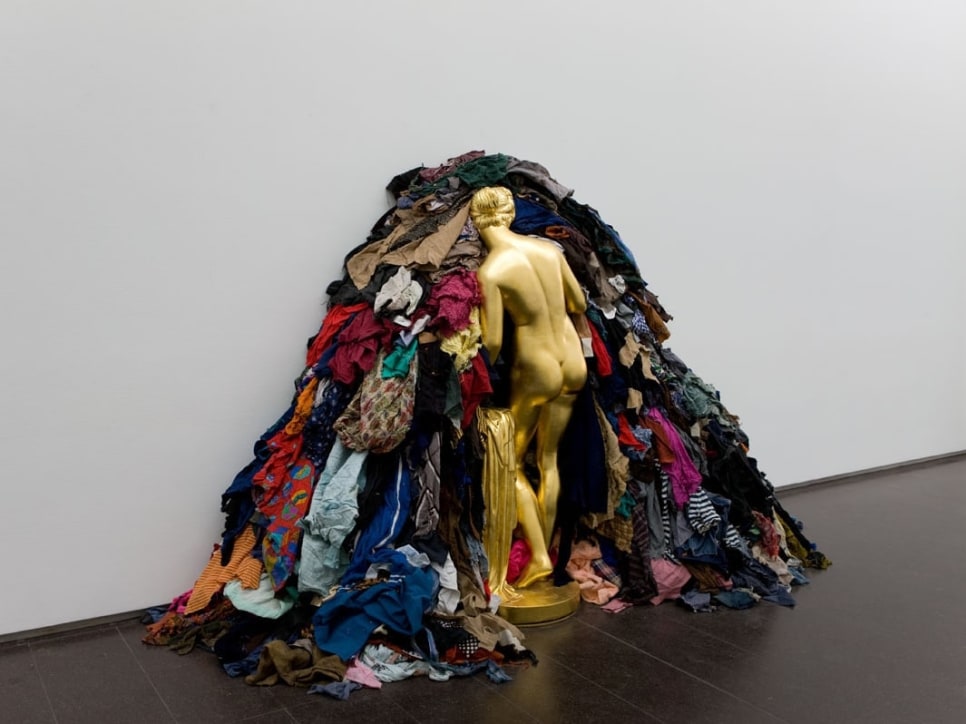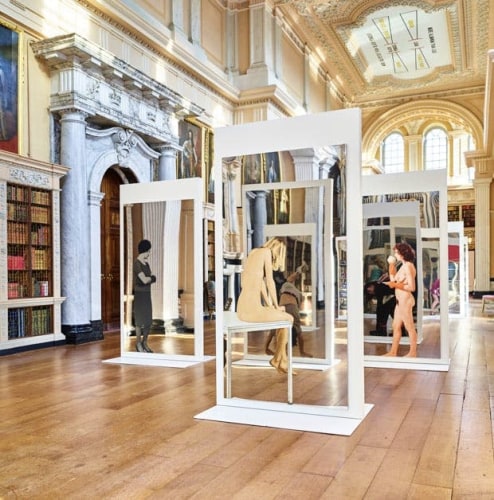

Michelangelo Pistoletto, ‘Self-Portraits’ (Il Presente/The Present) to ‘Quadri Specchianti/Mirror paintings’ (1961–present),
in the Long Library of Blenheim Palace. Photo: Tom Lindboe. Courtesy of the Blenheim Art Foundation
Michelangelo Pistoletto, a luminary of Italian art since the inception of Arte Povera in the 1960s, stands unassuming in Blenheim Palace’s Long Library. Above him, historic portraits of British aristocracy – Spencers and Churchills – seem to peer down disapprovingly. If they suspect an intruder, they must look again; this is one of the artist’s mirror self-portraits, with a candid image photo-silkscreened onto a reflective surface. Blenheim is as much in Pistoletto as vice versa.
The people depicted in Pistoletto’s mirrors (several of them are displayed in Blenheim for this show) are deliberately incongruous with these surroundings – although arguably no more so than the visitors reflected in them. In the Green Drawing Room at the other end of Blenheim’s state rooms, numerous portraits by Sir Joshua Reynolds are themselves reflected in the newly-mirrored bases of Upside-down Furniture (1978).
This work is a key example of how Pistoletto has appropriated the stately pile’s material for his own utopian message, which echoes around the estate. The curves of the mirrored chair base repeat outside, in the Formal Gardens’ water pools, which themselves of course reflect the house and grounds. In the Italian Garden, a resident statue of Venus rhymes with Pistoletto’s renowned Venus of the Rags (1967–2013), which is installed in the chapel: the artist’s plaster and rags hold their own against the all-consuming marble monument to the 1st Duke of Marlborough.
Read full article at apollo-magazine.com

